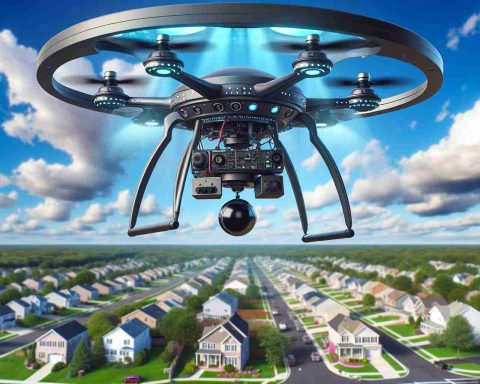Bengaluru-based space startup Pixxel has made history with the launch of India’s inaugural private constellation of Earth imaging satellites, known as Firefly. This milestone opens new frontiers in the rapidly evolving field of hyperspectral imaging.
A SpaceX rocket successfully deployed three of the six Firefly satellites, which are touted as the world’s highest-resolution commercial-grade hyperspectral satellites. With the ability to observe the Earth in over 150 spectral bands, these satellites boast a remarkable 5-meter resolution, significantly finer than the typical 30 meters offered by conventional models. This advancement positions Pixxel as a key player on a global scale.
Pixxel founder and CEO Awais Ahmed emphasized the uniqueness of this technology, which has the potential to transform sectors ranging from agriculture to defense. He outlined plans for three additional Firefly satellites to be launched in the coming months, with intentions to expand the constellation by an additional 18 satellites thereafter.
The capabilities of Firefly satellites are expected to deliver unprecedented insights into environmental conditions, including chemical compositions, vegetation health, and water quality. Lt Gen A K Bhatt, Director General of the Indian Space Association, underscored the transformative possibilities these advanced imaging capabilities present, particularly in defense applications.
With a burgeoning market valued at approximately $19 billion, including $14 billion in image analytics, Pixxel is well-poised to carve out a substantial segment within the hyperspectral imaging niche. The firm has already garnered interest from over 60 clients, including prominent organizations such as the US National Reconnaissance Organization and British Petroleum.
As Pixxel progresses with its ambitious vision, the launch of the Firefly constellation marks a significant leap towards harnessing space technology to tackle urgent global challenges and foster a deeper understanding of our planet.
The Broader Implications of Hyperspectral Imaging Technology
The launch of Pixxel’s Firefly constellation represents a pivotal moment not only for the Indian space sector but also for the global landscape of satellite technology and its multifaceted applications. By harnessing the capabilities of hyperspectral imaging, this advancement is poised to impact various sectors, reshaping societal interactions with technology and nature.
In agriculture, for instance, the ability to analyze soil health and crop health at an unprecedented resolution can enhance food security and promote sustainable farming practices. Farmers can receive real-time data that informs better crop management decisions, potentially leading to increased yields and reduced reliance on chemical fertilizers. As the global population expands, innovations that enable more efficient food production will be critical in addressing hunger and resource allocation.
Culturally, the reach of such technology extends into environmental awareness and advocacy. With unprecedented insights into ecological conditions and resources, communities may become more engaged in conservation efforts. This could foster a culture of accountability and stewardship over natural resources as data becomes increasingly accessible. Local and global communities can leverage such information to drive policy changes and demand accountability from industries impacting the environment.
On a global economic scale, the emergence of companies like Pixxel signifies a shift towards privatization in space technology, heralding a new era of commercial space exploration. With the hyperspectral imaging market expected to grow significantly, the influx of investment and technological innovation could lead to new business models that integrate satellite data in various industries, from urban planning to environmental monitoring. Consequently, this could stimulate job creation and economic development in sectors aligned with space technology.
As the technological capabilities of satellites like the Firefly evolve, there are also potential environmental implications to consider. Hyperspectral imaging offers a tool for monitoring climate change, assessing natural disasters, and tracking biodiversity. However, reliance on space technology must be matched with an awareness of its environmental footprint, including the carbon emissions associated with rocket launches and the eventual management of space debris. Future trends in satellite technology will need to balance these concerns with the urgent need for comprehensive environmental tracking.
In summary, the significance of Pixxel’s advancements extends far beyond the realm of space technology. By blending high-resolution hyperspectral imaging with practical applications, this innovation nurtures societal growth, cultural awareness, and economic development, all while presenting vital opportunities and challenges in environmental stewardship. As we look toward the future, the implications of deploying such transformative technology will linger in our collective consciousness, possibly reshaping our interactions with the planet for generations to come.
The Future of Hyperspectral Imaging: Exploring the Impact of Pixxel’s Firefly Satellites
As the world increasingly turns to innovative technologies to address critical challenges, Pixxel’s groundbreaking launch of the Firefly constellation heralds a new era for hyperspectral imaging. This article delves into the multifaceted benefits and potential challenges associated with this pioneering technology, as well as FAQs that may arise for investors, researchers, and the general public.
FAQs about Hyperspectral Imaging Satellites
What is hyperspectral imaging?
Hyperspectral imaging captures image data across numerous wavelengths of the electromagnetic spectrum. This method enables precise identification of materials and conditions on Earth, as it provides a wealth of spectral information not accessible through conventional cameras.
How will Firefly satellites impact agriculture?
Farmers can utilize data from Firefly to monitor crop health, assess soil conditions, and optimize yields. The satellites’ ability to analyze vegetation health and chemical compositions will allow for targeted interventions, reducing waste and enhancing productivity.
What are the expected applications in defense?
Defense agencies can leverage hyperspectral imaging for reconnaissance, surveillance, and monitoring hidden threats. The increased resolution and spectral detail help in identifying materials, making it a valuable tool for situational awareness.
Pros and Cons of the Firefly Constellation
Pros:
1. High Resolution: With a resolution of 5 meters, Firefly enables unprecedented data collection, making it attractive for commercial and governmental clients.
2. Broad Applicability: Its uses span diverse fields such as environmental monitoring, disaster response, energy, and agriculture, thereby attracting a broad client base.
3. Global Market Growth: The hyperspectral imaging market is rapidly expanding. Pixxel’s advanced capabilities position it well to capture a significant share of a $19 billion market.
Cons:
1. Cost: Developing and deploying hyperspectral satellites can be expensive, which may limit access for smaller entities and startups.
2. Regulatory Challenges: The space industry is heavily regulated. Navigating these regulations can be daunting and may delay project timelines.
3. Technological Limitations: While innovative, hyperspectral imaging may still face challenges such as data overloading and the need for sophisticated algorithms to analyze and interpret data effectively.
Predictions for the Future of Hyperspectral Imaging
Industry experts predict that hyperspectral imaging will become increasingly embedded in various sectors over the next decade. The trend towards sustainability and climate monitoring is expected to drive heightened demand for these advanced technologies. Companies like Pixxel, along with collaboration from space agencies and private entities, will likely lead the charge in innovating new applications that address pressing global issues such as climate change and resource management.
Quick Tips for Maximizing Benefits from Hyperspectral Data
1. Invest in Training: Ensure that teams are well-versed in interpreting hyperspectral data to extract valuable insights effectively.
2. Integrate with Other Technologies: Combine hyperspectral imaging with other remote sensing technologies, like LiDAR, for enhanced data analytics.
3. Stay Updated: Follow developments from industry leaders like Pixxel and attend conferences to learn about the latest advancements and use cases in hyperspectral imaging.
As Pixxel continues to expand its Firefly constellation, the implications of its technology are vast. With proper adoption and integration across various sectors, hyperspectral imaging could significantly enhance our understanding of the Earth’s systems and facilitate better decision-making for future challenges. The journey of understanding and leveraging this capability has only just begun.




















